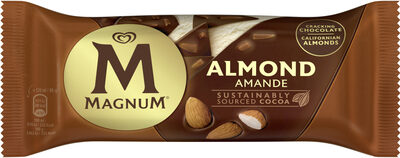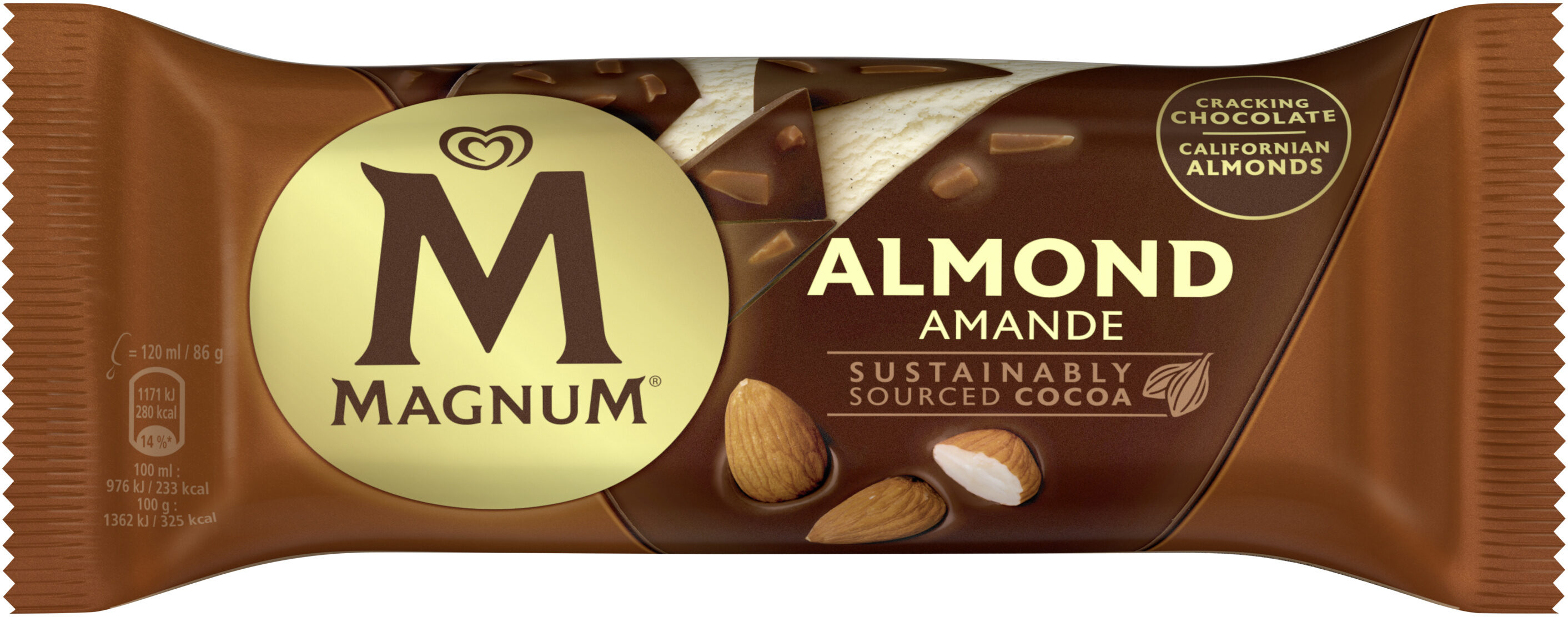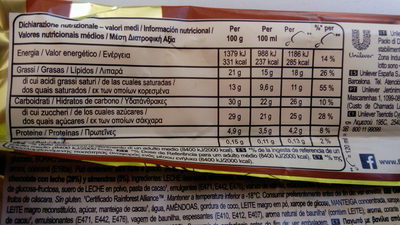Magnum Ice Cream Lolly ALMOND 120 ML - 86 g
This product page is not complete. You can help to complete it by editing it and adding more data from the photos we have, or by taking more photos using the app for Android or iPhone/iPad. Thank you!
×
Some of the data for this product has been provided directly by the manufacturer Unilever France.
Barra-kodea: 8000920500224 (EAN / EAN-13)
Izen arrunta: Glace vanille à l'arôme naturel de vanille de Madagascar enrobée de chocolat au lait (28%) et d'amandes (5%).
Kopurua: 86 g
Ontziratzea: en:multilayer-composite, en:Film, 81 C/X
Kategoriak: en:Snacks, en:Desserts, en:Sweet snacks, en:Confectioneries, en:Frozen foods, en:Frozen desserts, en:Ice creams and sorbets, Izozki, en:Ice cream bars
Etiketak, ziurtagiriak, sariak:
en:No gluten, en:Green Dot, en:Rainforest Alliance, Rainforest Alliance Cocoa, Triman, it:Bezglutenowy


Origin of the product and/or its ingredients: France
Link to the product page on the official site of the producer: https://www.magnumicecream.com/de/produk...
Dendak: EDEKA
Saltzen diren herrialdeak: Austria, Belgika, Frantzia, Alemania, Guadalupe, Italia, Singapur, Espainia, Suedia, Suitza
Matching with your preferences
Ingurumena
Carbon footprint
Ontziratzea
Transportation
Etiketak
Other information
Conservation conditions: À conserver à -18°C.
Customer service: Magnum Relation Consommateurs, Unilever France, 20 rue des Deux Gares 92842 Rueil-Malmaison Cedex
Report a problem
Datuen iturria
The manufacturer Unilever France uses Equadis to automatically transmit data and photos for its products.
Product added on by openfoodfacts-contributors
Last edit of product page on by foodless.
Produktuaren orria -gatik editatua 5m4u9, aleene, date-limite-app, davidepio, fiffi, foodrepo, foodvisor, ibwocoruytrc, ilariapicelli, inf, kiliweb, nicoolas, olofolleola4, openfood-ch-import, org-unilever-france-gms, packbot, predatorix, pyrka, roboto-app, scanbot, segundo, thaialagata, torredibabele, yuka.RnE4OUFJSmNoK1ZSdU1FYjQwM253ODlmMnJuNFlGcXRGcmNPSWc9PQ, yukafix.












